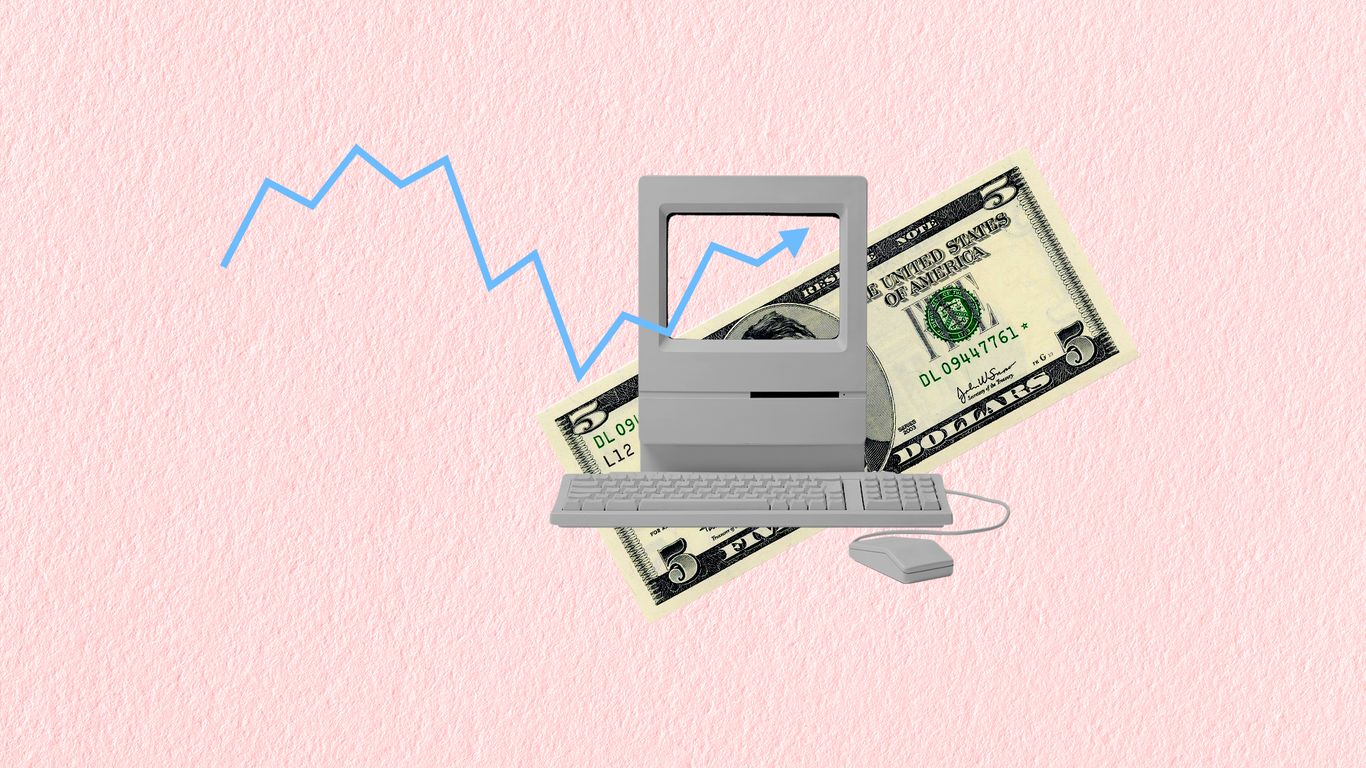
In the late 1990s, a surge in technology-fueled productivity enabled rapid growth, paired with subdued inflation, ample jobs, and low interest rates. Just maybe, the optimists say, AI might create the same happy conditions.
- Not so fast, say some leading economists.
The big picture: There are significant differences in the current economic and demographic backdrop — and the nature of the AI rollout — that could mean inflation remains a problem and the job picture more worrying, even if AI lives up to its promise.
- The disinflation of the 1990s came about in part due to the information technology revolution, but was helped along by globalization and demography — both forces that are in retreat today.
- If you take the predictions of leading executives seriously, AI advances stand to eliminate many current types of jobs more rapidly than entirely new jobs are created.
Flashback: The late 1990s are a particularly glorious time for believers in technology-driven expansion. The IT revolution, decades in the making, was finally generating meaningful productivity gains for companies.
- This gave Federal Reserve chair Alan Greenspan comfort that inflation wouldn’t take off despite a booming economy — a judgment that led the Fed to resist interest rate increases.
- Trump administration officials have lately been emphasizing this historical experience as a parallel for today. White House economic adviser Kevin Hassett did so quite explicitly in a conversation with Axios on Wednesday.
Yes, but: There were other things going on in the late 1990s that contributed to those happy results.
- The extra-large baby boom generation was entering its peak working years, and the share of American women who work was still rising. This all contributed to a higher labor supply.
- Globalization was occurring at full tilt, which amounted to a disinflationary force — dragging down the price of imported consumer goods.
Reality check: Now, the baby boomers are retiring, the share of women in the workforce has leveled off, restrictionist immigration policy is throttling labor supply, and tariffs likely mean higher prices for imported goods.
What they’re saying: “Inflation in the late 1990s benefited from global disinflationary forces as globalization was increasing, and a global demographics dividend with labor supply growth strong,” Matthew Luzzetti, chief U.S. economist at Deutsche Bank, tells Axios.
- “These forces are the opposite today — trade policies are lifting inflation and an aging population plus weaker immigration flows are significant headwinds to labor supply,” he says.
Zoom out: Unemployment was very low in the late 1990s, as workers displaced by technology were able to rapidly find work in some of the other opportunities that were arising.
- That’s the process of technological change and labor reallocation in a nutshell. The internet eliminated many jobs, like travel agents, but created jobs like “digital content strategist.”
- But the timing matters. One risk is that AI job destruction will happen too quickly for comfort, and that the adjustment process will prove unusually painful, as it takes time for displaced workers to find the jobs of the future.
The bottom line: “The challenge is that, with innovation, there is often a time inconsistency between the costs and the benefits,” Fed governor Christopher Waller said in a speech Wednesday that noted that the AI adoption “seems to be following the pattern of ever-faster adoption and change.”
- “The disruptions come first; the benefits take time,” said Waller.
Disclaimer: This news has been automatically collected from the source link above. Our website does not create, edit, or publish the content. All information, statements, and opinions expressed belong solely to the original publisher. We are not responsible or liable for the accuracy, reliability, or completeness of any news, nor for any statements, views, or claims made in the content. All rights remain with the respective source.
